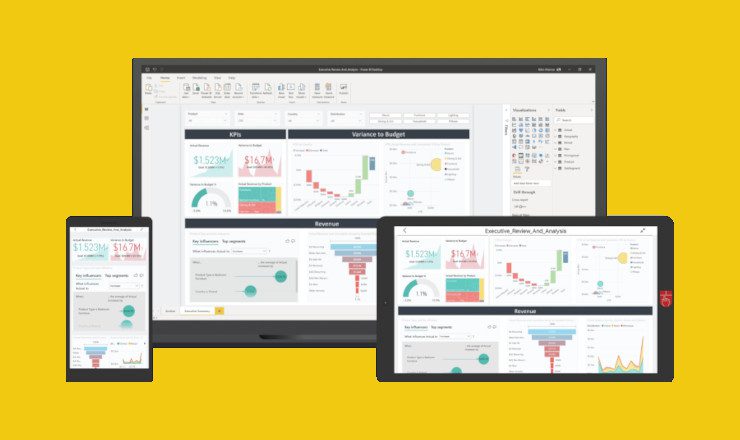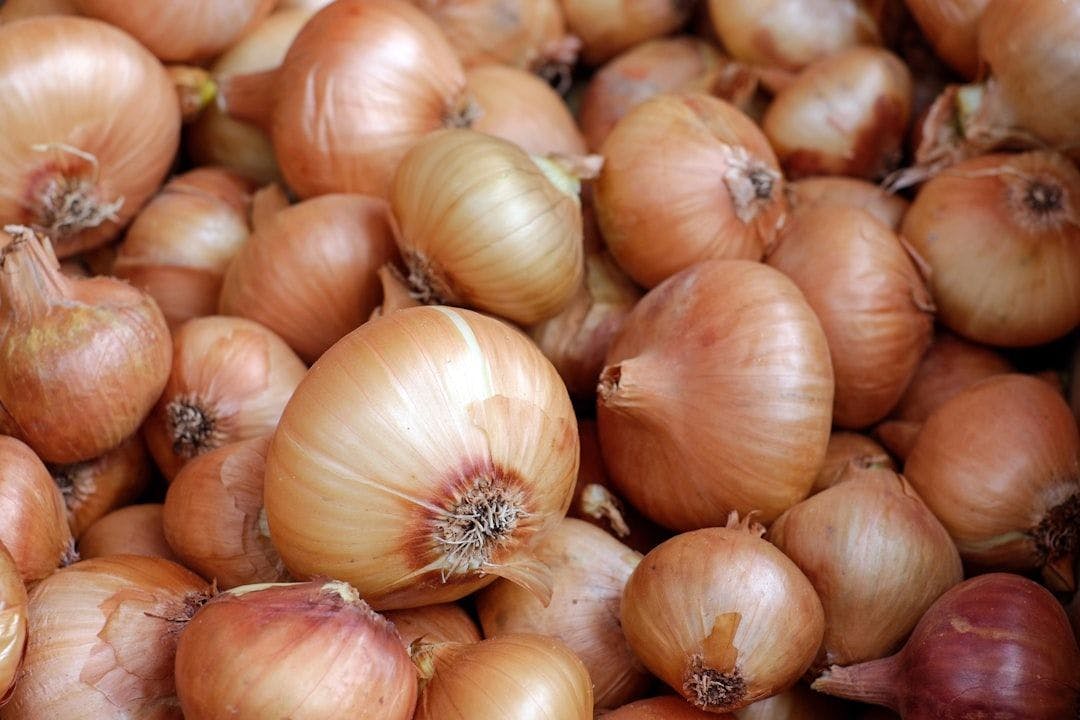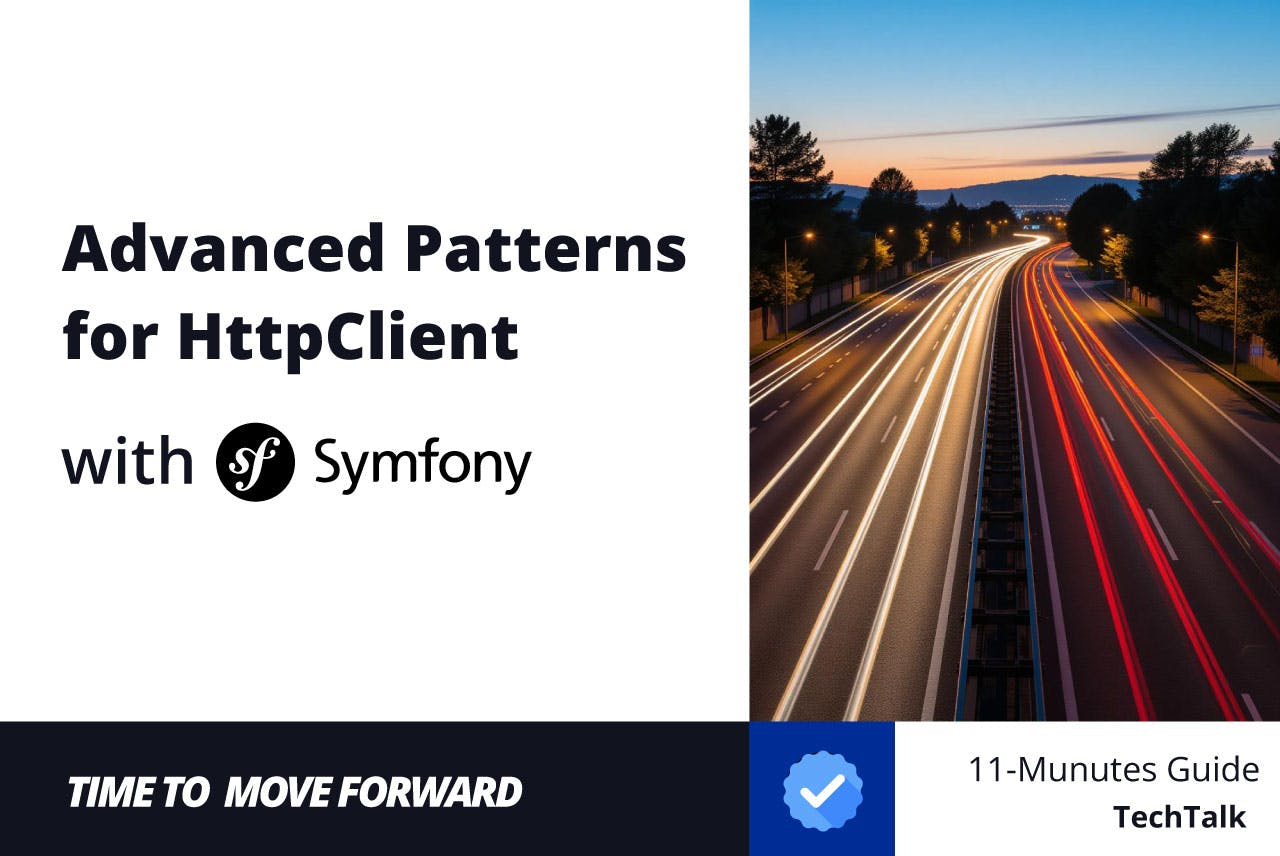All Images are AI-generated by the author free on NightCafe Studio: here.
Introduction
We stand at the confluence of two technological titans: quantum computing and artificial intelligence.
This intersection is giving rise to Quantum AI, a paradigm that transcends classical computation limits and promises to redefine intelligence itself.
We are currently witnessing early stages where Quantum AI moves from pure research toward practical applications, seeding potential transformations across global industries.
This quiet but profound evolution augments classical AI capabilities with quantum mechanics’ unique processing power to tackle computationally intractable problems.
Quantum AI needs substantial breakthroughs in quantum computing to be effective, but these breakthroughs are happening everyday!
This article posits an optimistic view of what quantum computing will look like if the error correction, the quantum internet, and qubit coherence problems are solved.
We also realize that the first breakthroughs will come as quantum-classical hybrid algorithms.
This article examines ten key industries where Quantum AI holds promise, highlighting emerging developments and providing insights into a future potentially driven by the synergy of quantum and AI.
This field is sometimes referred to as QAI.
1. Healthcare & Pharmaceuticals: From Drug Discovery to Personal Genomics
Drug discovery is notoriously slow and expensive, hindered by the complexity of accurately simulating molecular interactions with classical computers.
Quantum AI offers potential advantages using quantum machine learning (QML) approaches to model molecular systems and simulate biological target interactions.
These interactions involve quantum mechanical effects that quantum systems can potentially model more naturally than classical computers.
This could accelerate discovery phases and enable more personalized treatments based on individual genetic profiles.
We are already seeing success stories in customized cancer treatment and personal genome analysis!
Current Status
Current quantum drug discovery primarily uses Variational Quantum Eigensolvers (VQE) to calculate molecular ground state energies.
QAOA (Quantum Approximate Optimization Algorithm) applies to molecular optimization problems and catalyst design.
Present NISQ (Noisy Intermediate-Scale Quantum) devices with 50-1000 qubits process molecular feature maps through quantum neural networks.
Current QML models employ ZFeatureMap, ZZFeatureMap, and PauliFeatureMap over genomic data using Quantum Support Vector Classifiers and Variational Quantum Classifiers.
Two-Year Projection
By 2027, fault-tolerant quantum computers with 1000-5000 logical qubits could enable sophisticated molecular simulations.
Variational Quantum Circuits will support classification, optimization, and predictions with enhanced computational efficiency.
Advanced quantum neural networks will process larger molecular databases using quantum convolutional neural networks for 3D protein structure analysis.
Quantum-enhanced genomic analysis could leverage quantum algorithms for real-time personalized treatment optimization through pattern recognition in complex genetic sequences.
Industry Preparation Strategies
- Research Scientists should develop expertise in quantum chemistry software like Qiskit Nature and PennyLane.
- Data Scientists need quantum feature engineering skills and quantum data encoding techniques for molecular and genomic datasets.
- Computational Biologists must gain familiarity with variational quantum algorithms and hybrid classical-quantum optimization methods.
- IT Infrastructure Teams should plan for quantum-classical hybrid computing environments and cloud-based quantum access.
- Regulatory Affairs professionals must stay informed on emerging standards for quantum-enhanced drug development and validation protocols.
- Investment Decision Makers should evaluate quantum computing partnerships and assess ROI timelines for quantum adoption.
2. Finance: Engineering More Robust Markets
Financial markets involve countless interacting variables, making risk modeling and portfolio optimization computationally challenging for classical systems.
Quantum AI could potentially analyze more complex market scenarios and identify subtle patterns within financial data.
This offers potential improvements in risk assessment, fraud detection, and adaptive trading strategies.
The quantum advantage lies in processing high-dimensional financial data through quantum feature spaces inaccessible to classical systems.
Current limitations on entering large-scale data into quantum computers are a challenge, but a hybrid approach will solve that.
Current Status
Current quantum finance applications utilize QAOA for portfolio optimization and risk analysis problems.
Present implementations employ variational quantum algorithms where classical computers optimize quantum circuit parameters.
Quantum neural networks process financial time series data through parameterized quantum circuits with variational parameters encoded in rotation angles.
Current NISQ devices (50-1000 qubits) run hybrid classical-quantum algorithms for Monte Carlo simulations in risk assessment.
Two-Year Projection
By 2027, improved quantum error correction and 1000+ logical qubit systems could enable real-time portfolio optimization across thousands of assets.
Advanced quantum neural networks could process high-frequency trading data using quantum convolutional neural networks for market volatility pattern recognition.
Quantum-enhanced Monte Carlo methods could provide exponential speedups for risk calculations.
Quantum machine learning models could detect fraud through quantum feature maps that classical systems cannot access efficiently.
Industry Preparation Strategies
- Quantitative Analysts should learn quantum optimization algorithms (QAOA, VQE) and quantum machine learning for financial modeling.
- Risk Managers need to develop understanding of quantum Monte Carlo methods and quantum-enhanced scenario analysis.
- Algorithmic Traders should explore quantum algorithms for portfolio optimization and real-time market analysis.
- Compliance Officers must study emerging quantum cryptography standards and post-quantum security protocols.
- IT Security Teams should prepare for quantum-safe cryptography implementation and hybrid quantum-classical systems.
- Financial Engineers need expertise in variational quantum circuits and quantum feature encoding for financial data.
3. Logistics & Supply Chain: Intelligent Network Optimization
Global supply chains represent complex optimization problems that challenge even powerful supercomputers.
Quantum AI could potentially solve these logistical challenges more efficiently than classical approaches.
This includes creating dynamic networks that can predict disruptions and adapt autonomously.
The quantum advantage emerges from solving combinatorial optimization problems that scale exponentially with classical methods, such as D-Wave’s QUBO algorithm.
Current Status
Current quantum logistics applications primarily use QAOA for route optimization and supply chain management problems.
Variational quantum algorithms tackle traveling salesman problems and vehicle routing optimization with quantum circuits encoding logistics constraints as Ising models.
Present NISQ implementations require classical preprocessing to reduce problem size and use hybrid quantum-classical optimization.
Current applications are limited to small-scale demonstrations with 10-50 nodes due to quantum decoherence and gate fidelity constraints.
Two-Year Projection
By 2027, larger quantum systems (1000+ qubits) could handle city-scale logistics optimization in real-time.
Quantum neural networks could process multiple data streams (traffic, weather, inventory) simultaneously using quantum feature maps for multidimensional optimization.
Adiabatic quantum computers could solve large-scale combinatorial problems while variational quantum circuits adapt routing strategies based on real-time conditions.
Quantum-enhanced machine learning could predict supply chain disruptions through pattern recognition algorithms exceeding classical capabilities.
Companies could reach worldwide efficiency through using quantum-classical hybrids that can monitor and optimize in real-time.
Industry Preparation Strategies
- Supply Chain Managers should learn quantum optimization principles and understand how quantum algorithms solve complex routing problems.
- Operations Research Analysts need to develop skills in QAOA implementation and quantum-classical hybrid optimization techniques.
- Logistics Engineers should study quantum computing applications in transportation and distribution optimization.
- Data Analytics Teams must understand quantum machine learning for demand forecasting and disruption prediction.
- IT Infrastructure Teams should prepare for integration of quantum computing resources with existing logistics management systems.
- Strategic Planners need to assess quantum computing partnerships and evaluate competitive advantages from quantum-enhanced optimization.
4. Manufacturing & Materials Science: Atomic-Level Design
Traditional materials discovery involves extensive experimentation and trial-and-error approaches.
Quantum AI could potentially enable researchers to design materials at the atomic level by simulating quantum interactions.
This could lead to materials with specific desired properties designed computationally before synthesis.
The quantum advantage stems from naturally modeling quantum mechanical effects that govern material properties.
In a way, you could say that this is the most direct application of quantum mechanics.
Current Status
Current quantum materials science uses Variational Quantum Eigensolvers (VQE) to calculate electronic structures and ground state energies.
QAOA simulates superconducting materials behavior and provides insights into electronic structure.
Quantum algorithms model quantum many-body physics problems computationally intractable for classical computers.
Present NISQ devices can handle small molecular systems (up to ~20 atoms) with variational quantum circuits encoding material properties into quantum states.
Two-Year Projection
By 2027, fault-tolerant quantum systems could simulate complex crystalline structures and defect interactions in materials.
Quantum neural networks could predict material properties from atomic configurations using quantum convolutional neural networks processing 3D crystal structures.
Advanced VQE implementations could optimize catalytic surfaces and design novel semiconductors by solving many-body Schrödinger equations directly.
Quantum machine learning could identify optimal material compositions through quantum feature spaces encoding atomic interactions more naturally than classical representations.
Industry Preparation Strategies
- Materials Scientists should develop expertise in quantum simulation software (Qiskit Nature, Cirq) and variational quantum eigensolvers.
- Computational Chemists need to learn quantum algorithms for electronic structure calculations and many-body quantum systems.
- R&D Engineers should understand quantum approaches to materials optimization and design workflows.
- Manufacturing Engineers must study quantum-enhanced quality control and defect prediction methods.
- Materials Database Managers should prepare for quantum-generated materials data and property prediction databases.
- Industry Strategists need to evaluate quantum computing investments and partnerships with quantum materials research institutions.
5. Cybersecurity: Quantum-Enhanced Defense
While quantum computers may threaten current encryption methods, quantum-enhanced AI could simultaneously strengthen cybersecurity.
This includes detecting sophisticated threats and implementing quantum-resistant security measures.
Quantum AI could identify attack patterns through quantum feature spaces inaccessible to classical systems.
The dual nature of quantum computing as both threat and solution creates urgency for quantum-safe security implementations.
Current Status
Current quantum cybersecurity focuses on post-quantum cryptography implementation, with NIST releasing standardized algorithms in August 2024.
Quantum machine learning systems use variational quantum circuits to detect network anomalies through quantum feature maps encoding traffic patterns.
Present NISQ devices process limited security datasets, employing quantum neural networks for pattern recognition in cybersecurity threats.
Quantum random number generators provide true randomness for cryptographic applications, while QKD protocols enable theoretically secure short-distance communication.
Two-Year Projection
By 2027, larger quantum systems could enable real-time analysis of global network traffic through quantum-enhanced machine learning algorithms.
Quantum neural networks could detect subtle attack patterns by processing high-dimensional security data in quantum feature spaces.
Advanced quantum cryptography will implement lattice-based and hash-based post-quantum encryption standards across critical infrastructure.
Quantum-enhanced intrusion detection systems could identify zero-day exploits through quantum pattern recognition surpassing classical anomaly detection.
Industry Preparation Strategies
- Cybersecurity Analysts should learn post-quantum cryptography standards and quantum-enhanced threat detection methods.
- Security Architects need to design migration strategies for quantum-safe encryption and quantum-resistant security protocols.
- Network Security Engineers must understand quantum key distribution and quantum random number generation implementation.
- Incident Response Teams should develop skills in quantum-enhanced forensics and quantum-resistant recovery procedures.
- Compliance Officers must study emerging quantum security standards and regulatory requirements for post-quantum cryptography.
- CISO/Security Leadership should plan organizational transition timelines for quantum-safe security infrastructure.
This is the most critical and pressing issue today, because if Y2Q comes early, (Google it), the whole world will be unprepared,
6. Energy & Utilities: Smart Grid Optimization
The integration of renewable energy sources creates complex grid management challenges due to their variable nature.
Quantum AI could potentially optimize these systems by processing real-time data from multiple sources more effectively than classical approaches.
This includes balancing supply and demand across distributed renewable energy networks.
The quantum advantage emerges from solving complex optimization problems with multiple constraints and variables simultaneously.
Current Status
Current quantum energy applications use QAOA for grid optimization problems and energy trading algorithms.
Variational quantum circuits model complex energy distribution networks as optimization problems where quantum states represent different grid configurations.
Present NISQ implementations can optimize small-scale microgrids with dozens of nodes using hybrid classical-quantum algorithms for real-time load balancing.
Quantum machine learning processes weather data and energy consumption patterns through parameterized quantum circuits, though current applications remain research demonstrations.
Two-Year Projection
By 2027, fault-tolerant quantum systems could optimize national-scale electrical grids in real-time, processing thousands of renewable energy sources simultaneously.
Quantum neural networks could predict energy demand and supply fluctuations using quantum-enhanced weather models and consumption pattern analysis.
Advanced variational quantum algorithms could solve complex energy market optimization problems.
Quantum machine learning could identify optimal energy storage and distribution strategies through multi-dimensional optimization in quantum feature spaces..
Industry Preparation Strategies for 2027
- Grid Operators should learn quantum optimization algorithms for real-time grid balancing and renewable energy integration.
- Energy Analysts need to develop skills in quantum machine learning for demand forecasting and market optimization.
- Renewable Energy Engineers should understand quantum-enhanced weather modeling and energy production prediction.
- Utility IT Teams must prepare for quantum-classical hybrid computing infrastructure and real-time optimization systems.
- Energy Trading Specialists should study quantum algorithms for complex energy market optimization and risk management.
- Sustainability Managers need to assess quantum computing applications for carbon footprint optimization and green energy transitions.
7. Agriculture: Precision Farming Technology
Sustainable agriculture for a growing population requires optimizing complex biological and environmental systems.
Quantum AI could potentially enhance precision farming through improved analysis of satellite imagery, sensor data, and biological processes.
This includes optimizing resource allocation and predicting crop yields with greater accuracy.
The quantum advantage lies in processing multidimensional agricultural data that captures subtle biological and environmental relationships.
Resources could also be reallocated in the case of natural disasters, and risk prediction and resource demands readjusted according to new scenarios.
Current Status
Current quantum agriculture applications employ quantum machine learning for crop yield prediction and optimization problems.
Interdisciplinary frameworks combine quantum biology, high-performance computing, and machine learning to optimize nutrient transfer in fungal networks.
Present quantum systems use variational quantum circuits to process hyperspectral satellite imagery and soil sensor data, encoding agricultural variables into quantum feature maps.
QAOA algorithms optimize fertilizer application patterns and irrigation scheduling, though current implementations are limited to small-scale farm plots.
Two-Year Projection
By 2027, quantum-enhanced precision agriculture could process vast satellite imagery datasets in real-time using quantum convolutional neural networks.
Advanced quantum algorithms could optimize complex biological processes like nitrogen fixation and photosynthesis through quantum simulations of molecular interactions.
Quantum machine learning could predict crop diseases and pest infestations by analyzing multi-dimensional sensor data in quantum feature spaces.
These systems could capture subtle biological relationships invisible to classical systems through soil pH, moisture, temperature, and nutrient level analysis.
Industry Preparation Strategies
- Precision Agriculture Specialists should learn quantum machine learning applications for crop monitoring and yield optimization.
- Agricultural Data Scientists need to develop expertise in quantum feature encoding for multi-sensor agricultural datasets.
- Farm Management Software Developers should study quantum algorithms for resource optimization and decision support systems.
- Soil Scientists must understand quantum simulations of nutrient cycling and soil chemistry optimization.
- Agricultural Engineers should learn quantum-enhanced sensor fusion and real-time field optimization techniques.
- Agribusiness Analysts need to assess quantum computing investments for competitive advantages in precision farming markets.
8. Media & Entertainment: Advanced Content Generation
Current generative AI is transforming content creation, and quantum-enhanced approaches could potentially explore larger creative spaces.
This includes providing more sophisticated personalization capabilities than classical recommendation systems.
Quantum AI could enable real-time generation of complex interactive content and personalized entertainment experiences.
The quantum advantage emerges from exploring vast creative solution spaces that are computationally intractable for classical systems.
We can envision users choosing their own adventure and the storyline changing dynamically in multiplayer computer games.
Current Status
Current quantum entertainment applications use variational quantum circuits for content recommendation and generation algorithms.
Quantum neural networks process user behavior patterns and content features through parameterized quantum circuits with variational parameters encoded in rotation angles.
Present NISQ implementations can only generate simple procedural content and optimize recommendation algorithms for small user bases.
These systems employ quantum feature maps to encode user preferences and content attributes in high-dimensional quantum spaces.
However, the field is developing rapidly.
Two-Year Projection
By 2027, larger quantum systems could enable real-time generation of complex interactive content using quantum generative adversarial networks (QGANs).
Quantum neural networks could create personalized entertainment experiences by processing massive user behavioral datasets through quantum convolutional networks.
Advanced variational quantum algorithms could generate dynamic storylines and adaptive game environments responding to user choices.
These systems could use quantum superposition to explore multiple narrative paths simultaneously, creating experiences computationally intractable for classical systems.
Industry Preparation Strategies
- Content Creators should learn quantum-enhanced creative tools and understand quantum generative algorithms for content development.
- Recommendation System Engineers need to develop skills in quantum machine learning for personalization and user modeling.
- Game Developers should study quantum algorithms for procedural content generation and dynamic world creation.
- Media Analytics Teams must understand quantum feature encoding for complex user behavior analysis and content optimization.
- Entertainment Technology Officers should plan for quantum computing integration in content creation and distribution pipelines.
- Creative Directors need to explore quantum-enhanced collaborative creation tools and novel interactive narrative formats.
9. Telecommunications: Network Optimization
Modern telecommunication networks, especially with 5G and future 6G deployments, involve complex optimization challenges.
Quantum AI could potentially manage these networks more efficiently in real-time than classical optimization approaches.
This includes dynamic spectrum allocation, network traffic management, and antenna configuration optimization.
The quantum advantage emerges from solving large-scale combinatorial optimization problems that scale exponentially with network complexity.
Current Status
Current quantum telecommunications applications use QAOA for spectrum allocation and network resource optimization problems.
Variational quantum algorithms tackle network routing optimization with quantum circuits encoding network constraints as combinatorial optimization problems.
Present NISQ implementations can optimize small-scale network topologies with dozens of nodes using hybrid quantum-classical algorithms for real-time bandwidth allocation.
Quantum machine learning processes network traffic patterns through parameterized circuits, though current applications are limited by quantum decoherence and gate error rates.
Two-Year Projection
By 2027, fault-tolerant quantum systems could optimize national telecommunications networks in real-time, managing thousands of 5G/6G base stations simultaneously.
Quantum neural networks could predict network congestion and optimize signal routing through quantum-enhanced traffic analysis processing multi-dimensional network data.
Advanced variational quantum circuits could dynamically reallocate spectrum and optimize antenna beam patterns based on real-time conditions.
Quantum machine learning could predict and prevent network failures through pattern recognition in network performance metrics exceeding classical capabilities.
Industry Preparation Strategies
- Network Engineers should learn quantum optimization algorithms for spectrum allocation and network resource management.
- Telecommunications System Architects need to study quantum-enhanced network design and optimization methodologies.
- 5G/6G Engineers should develop understanding of quantum algorithms for massive MIMO and beamforming optimization.
- Network Operations Center Teams must prepare for quantum-enhanced network monitoring and predictive maintenance systems.
- RF Engineers should learn quantum approaches to interference mitigation and signal processing optimization.
- Telecom Strategy Teams need to assess quantum computing partnerships and competitive advantages from quantum-enhanced network management.
10. Aerospace & Defense: Advanced Simulation and Analysis
Aerospace design and defense applications require extremely complex simulations and strategic analysis.
Quantum AI could potentially enable more detailed simulations and analysis of complex systems than currently possible with classical computers.
This includes aerodynamic modeling, strategic scenario analysis, and complex system optimization.
The quantum advantage emerges from simulating physical quantum effects and solving optimization problems with exponentially large solution spaces.
Current Status
Current quantum aerospace applications use Variational Quantum Eigensolvers (VQE) for computational fluid dynamics problems and QAOA for aircraft design optimization.
Quantum algorithms model aerodynamic systems and optimize flight trajectories with variational quantum circuits encoding aerodynamic constraints and performance parameters.
Present NISQ devices can simulate small-scale fluid flow problems and optimize limited aircraft components using quantum-classical hybrid algorithms.
Defense applications employ quantum machine learning for pattern recognition in surveillance data and strategic scenario analysis.
Two-Year Projection
By 2027, fault-tolerant quantum systems could enable full-scale aerodynamic simulations of hypersonic vehicles with molecular-level precision.
Quantum neural networks could process massive intelligence datasets using quantum convolutional networks for real-time threat analysis and strategic planning.
Advanced variational quantum circuits could optimize complex aerospace system designs (propulsion, avionics, materials) simultaneously.
Quantum-enhanced simulations could model extreme flight conditions and predict system failures before physical testing through quantum feature spaces.
Industry Preparation Strategies
- Aerospace Engineers should learn quantum simulation tools for fluid dynamics and structural optimization problems.
- Defense Analysts need to develop expertise in quantum machine learning for intelligence analysis and strategic planning.
- Flight Test Engineers should understand quantum-enhanced predictive modeling and failure analysis techniques.
- Systems Engineers must study quantum optimization approaches for complex multi-system aerospace vehicle design.
- Defense Contractors should prepare for quantum computing integration in simulation and analysis workflows.
- Aerospace R&D Leaders need to assess quantum computing investments and partnerships with quantum research institutions for competitive advantages.
Conclusion
The convergence of quantum computing and artificial intelligence, referred to as QAI, represents a significant potential advancement in computational capabilities.
Across multiple industries, Quantum AI research is exploring solutions to challenges that are computationally difficult for classical systems.
While many applications remain in early research stages, the developments of the next several years will provide clearer indications of practical quantum advantages.
We are transitioning from an era of traditional computing toward one where quantum-enhanced intelligence may unlock new possibilities in problem-solving and optimization.
The professionals who prepare now for this quantum-AI convergence will be positioned to lead their industries through this technological transformation.
The future belongs to those who understand both the promise and the practical limitations of Quantum AI
And – those who will learn it first have a critical advantage over those who move later!
The future – is now.
References
You can Google the papers without direct links.
1. Healthcare & Pharmaceuticals
Recent Research Papers
• Kyro, G. W., Morgunov, A., Brent, R. I., & Batista, V. S. (2024). “A hybrid quantum computing pipeline for real world drug discovery.” Scientific Reports, 14, Article 16632. https://www.nature.com/articles/s41598-024-67897-8
• Morgunov, A., et al. (2024). “Quantum Machine Learning in Drug Discovery: Applications in Academia and Pharmaceutical Industries.” arXiv preprint arXiv:2409.15645. https://arxiv.org/abs/2409.15645
• Pei, Z. (2024). “Computer-aided drug discovery: From traditional simulation methods to language models and quantum computing.” Cell Reports Physical Science, 5(12), 102484. https://www.cell.com/cell-reports-physical-science/fulltext/S2666-3864(24)00648-9
Foundational Quantum Chemistry References
• Cao, Y., et al. (2019). “Quantum chemistry in the age of quantum computing.” Chemical Reviews, 119(19), 10856-10915.
• Mcardle, S., et al. (2020). “Quantum computational chemistry.” Reviews of Modern Physics, 92(1), 015003.
2. Finance
Portfolio Optimization & Risk Management
• Rahman, M. M., et al. (2024). “PO-QA: A Framework for Portfolio Optimization using Quantum Algorithms.” arXiv preprint arXiv:2407.19857. https://arxiv.org/abs/2407.19857
• Mugel, S., et al. (2024). “Quantum Ensemble Optimisation: Revolutionizing Investment Portfolio Management with QAOA and VQE Integration.” ResearchGate. https://www.researchgate.net/publication/382510626_Quantum_Ensemble_Optimisation_Revolutionizing_Investment_Portfolio_Management_with_QAOA_and_VQE_Integration
• Schetakis, N., et al. (2023). “Best practices for portfolio optimization by quantum computing, experimented on real quantum devices.” Scientific Reports, 13(1), 19790. https://www.nature.com/articles/s41598-023-45392-w
3. Materials Science & Chemistry
Quantum Simulation of Materials
• Naval Research Laboratory (2024). “Scientists deliver quantum algorithm to develop new materials and chemistry.” Physical Review Research. https://phys.org/news/2024-03-scientists-quantum-algorithm-materials-chemistry.html
• IBM Quantum Network (2024). “Living in a Material World: Quantum-Centric Supercomputing May Redefine Materials Science.” The Quantum Insider. https://thequantuminsider.com/2024/10/29/living-in-a-material-world-quantum-centric-supercomputing-may-redefine-materials-science/
• Quantum Materials Research (2024). “How Quantum Computers Are Transforming Materials Science.” Quantum Zeitgeist. https://quantumzeitgeist.com/how-quantum-computers-are-transforming-materials-science/
4. Core Quantum Computing & Machine Learning
Foundational Papers
• Biamonte, J., et al. (2017). “Quantum machine learning.” Nature, 549(7671), 195-202.
• Schuld, M., & Petruccione, F. (2018). “Supervised learning with quantum computers.” Springer.
• Cerezo, M., et al. (2021). “Variational quantum algorithms.” Nature Reviews Physics, 3(9), 625-644.
• Farhi, E., & Harrow, A. W. (2016). “Quantum supremacy through the quantum approximate optimization algorithm.” arXiv preprint arXiv:1602.07674.
Recent Developments
• Huang, H. Y., et al. (2021). “Power of data in quantum machine learning.” Nature Communications, 12(1), 2631.
• Kandala, A., et al. (2017). “Hardware-efficient variational quantum eigensolver for small molecules and quantum magnets.” Nature, 549(7671), 242-246.
• Preskill, J. (2018). “Quantum computing in the NISQ era and beyond.” Quantum, 2, 79.
5. Logistics & Supply Chain Optimization
Quantum Optimization Applications
• Lucas, A. (2014). “Ising formulations of many NP problems.” Frontiers in Physics, 2, 5.
• Harwood, S., et al. (2021). “Formulating and solving routing problems on quantum computers.” IEEE Transactions on Quantum Engineering, 2, 1-17.
• Stollenwerk, T., et al. (2019). “Quantum annealing applied to de-conflicting optimal trajectories for air traffic management.” IEEE Transactions on Intelligent Transportation Systems, 21(1), 285-297.
6. Cybersecurity & Post-Quantum Cryptography
Security and Cryptography
• NIST (2024). “Post-Quantum Cryptography Standardization.” National Institute of Standards and Technology. https://csrc.nist.gov/Projects/post-quantum-cryptography
• Shor, P. W. (1999). “Polynomial-time algorithms for prime factorization and discrete logarithms on a quantum computer.” SIAM Review, 41(2), 303-332.
• Chen, L., et al. (2016). “Report on post-quantum cryptography.” US Department of Commerce, National Institute of Standards and Technology.
• Alagic, G., et al. (2020). “Status report on the second round of the NIST post-quantum cryptography standardization process.” NIST Interagency Report, 8309.
7. Energy & Smart Grids
Quantum Optimization for Energy Systems
• Ajagekar, A., & You, F. (2019). “Quantum computing for energy systems optimization: Challenges and opportunities.” Energy, 179, 76-89.
• Mohseni, M., et al. (2017). “Commercialize quantum technologies in five years.” Nature, 543(7644), 171-174.
• Parekh, O., et al. (2019). “Quantum optimization of maximum independent set using Rydberg atom arrays.” arXiv preprint arXiv:1908.06101.
8. Aerospace Engineering
Quantum Applications in Aerospace
• Aerospace Quantum Research (2024). “Quantum Computing And The Future Of Aerospace Engineering.” Quantum Zeitgeist. https://quantumzeitgeist.com/quantum-computing-and-the-future-of-aerospace-engineering/
• Venturelli, D., et al. (2015). “Quantum optimization of fully connected spin glasses.” Physical Review X, 5(3), 031040.
• Otterbach, J. S., et al. (2017). “Unsupervised machine learning on a hybrid quantum computer.” arXiv preprint arXiv:1712.05771.
9. Agriculture & Environmental Applications
Precision Agriculture
• Dunjko, V., & Briegel, H. J. (2018). “Machine learning & artificial intelligence in the quantum domain: a review of recent progress.” Reports on Progress in Physics, 81(7), 074001.
• Lloyd, S., Mohseni, M., & Rebentrost, P. (2014). “Quantum algorithms for supervised and unsupervised machine learning.” arXiv preprint arXiv:1307.0411.
10. Software Tools & Platforms
Quantum Computing Frameworks
• Qiskit Development Team (2023). “Qiskit: An open-source framework for quantum computing.” https://qiskit.org/
• Bergholm, V., et al. (2018). “PennyLane: Automatic differentiation of hybrid quantum-classical computations.” arXiv preprint arXiv:1811.04968. https://pennylane.ai/
• Cirq Development Team (2021). “Cirq: A python framework for creating, editing, and invoking Noisy Intermediate Scale Quantum (NISQ) circuits.” https://quantumai.google/cirq
• Cross, A. W., et al. (2017). “Open quantum assembly language.” arXiv preprint arXiv:1707.03429.
11. Industry Reports & Market Analysis
Commercial Quantum Computing
• IBM Quantum (2024). “IBM Quantum Roadmap.” https://www.ibm.com/quantum/roadmap
• Google Quantum AI (2024). “Quantum AI Research Publications.” https://quantumai.google/
• McKinsey & Company (2023). “Quantum computing: An emerging ecosystem and industry use cases.”
• Boston Consulting Group (2024). “The Next Decade in Quantum Computing and How to Play.”
12. Regulatory & Standards
Quantum Standards and Governance
• IEEE Standards Association (2024). “IEEE Standards for Quantum Computing.”
• International Organization for Standardization (2023). “ISO/IEC 23053:2022 – Information technology — Quantum computing — Concepts and terminology.”
• European Quantum Flagship (2024). “Strategic Research and Innovation Agenda.” https://qt.eu/
• National Quantum Initiative (2024). “National Quantum Initiative Act Implementation.” https://www.quantum.gov/
Claude Sonnet 4 was used for outlining, research, and verification for this article. It is available here: https://claude.ai/























